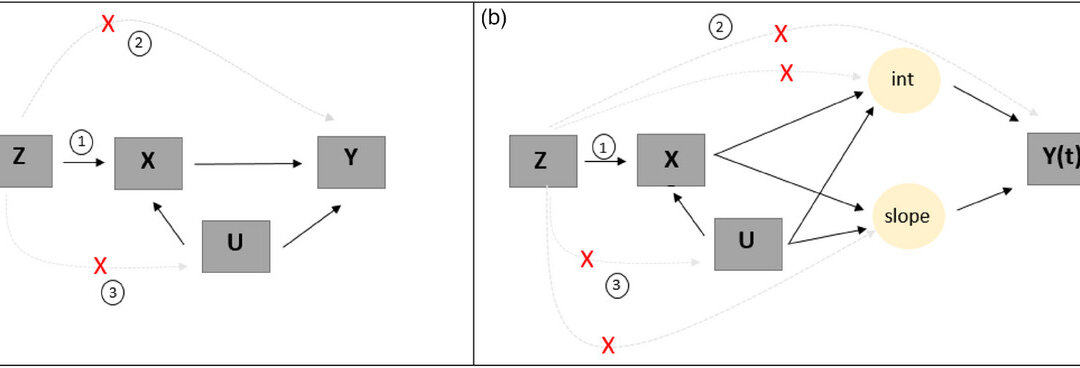January 3, 2023
In an article that appeared in Biometrical Journal, Le Bourdonnec et al (2023) discussed a method to address unmeasured confounding in cohort studies by an instrumental varible (IV) method for a time fixed expousre on an outcome trajectory, repeatedly measured over time. They explained how to use the IV method adapted to the two stage methodology for predicting the exposure according to the IV variable and then its inclusion in a mixed model to quantify the exposure association with the outcome trajectory. Finally, they estimated the total variance.
The authors next described using a two stage instrumental variable approach correcting bias due to residual unmeasured confounding and adapted to a longitudinal framework, relying on assumption of independence between regressors and unobserved variables. The authors rewrote their model in a linear mixed model way with first stage and second stage. They had to correct the variance for heteroscedasticity and use of an instrumental variable which they did through a sandwich estimator. However, this was correcting at the second stage but not the first, so they had to go back and use a parametric bootstrap. The authors have come up with their own R package, IVmm, for IV estimation of a binary or continuous time fixed exposure and a continuous repeated measure outcome.
The authors ran a simulation study to compare the naïve approach to the IV approach in the presence of unmeasured confounding. They simulated an exogenous IV and also an unobserved confounder as well as an endogenous continuous exposure variable. They found that at any sample size and any strength of association between the IV and the exposure, the naïve method showed very large bias and null covarage rate for association between the exposure and the change over time in all cases. Meanwhile, the two-stage IV methods “retrieved” the true causal association without any bias for the continuous exposure and for the binary exposure. Furthermore, the variance ended up being close to the nominal value, yet the two-stage IV method showed substantial variability in estimates in scenarios where the IV was weaker.
Previous methods used time-dependent exposures and associations with level of a repeated outcome at a particular time using distributed lag models. They then discussed the pros and cons of their method. They also added that their methods relies on classical assumptions of linear mixed model theory and was also robust to missing data under missing at random mechanism. At the end they concluded it was a useful statistical tool to take into account unobserved confounders in prospective cohort studies. However, what was not clear from their discussion was what context to avoid for this method and how interpreting the IV methodology could be difficult in particular contexts.
Written by,
Usha Govindarajulu
Keywords: survival, causal inference, instrumental variable, linear mixed effect
References
Le Bourdonnec K, Samieri C, Tzourio C, Mura T, Mishra A, Trégouët D-A, Cécile Proust-Lima C (2023). “Addressing unmeasured confounders in cohort studies: Instrumental variable method for a time-fixed exposure on an outcome trajectory” Biometrical Journal,
https://doi.org/10.1002/bimj.202200358
https://onlinelibrary.wiley.com/cms/asset/50971f53-cd60-42cb-85b5-57bc50c2df2c/bimj2541-fig-0001-m.jpg
